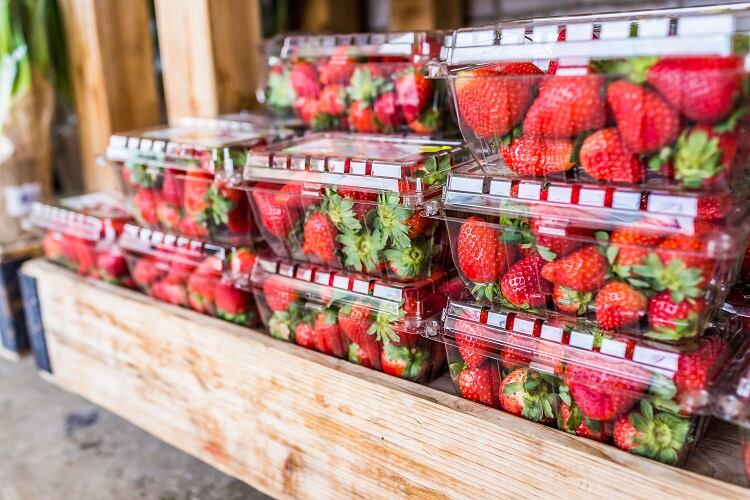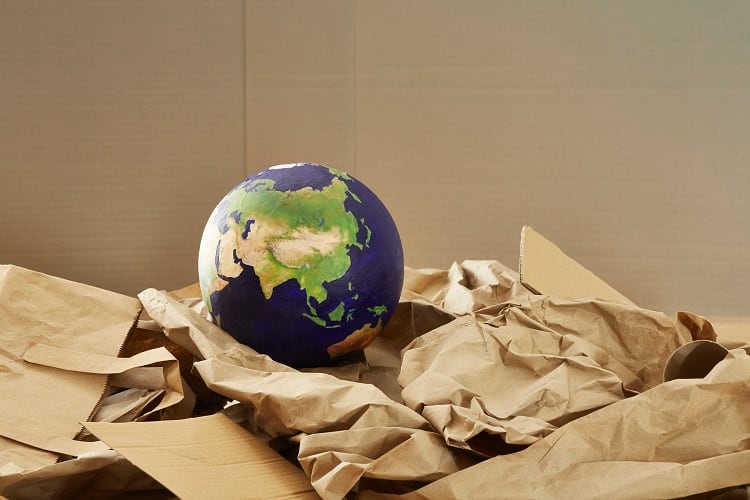“Strawberry,” said a recent paper on a new way to extend the shelf-life of the fruit, “is a highly perishable fruit with a limited shelf life with a rapid moisture loss, a susceptibility to physical and mechanical injury, and sensitivity to bacterial and fungal infections . . . Losses of strawberries due to microbial decay can be >40% annually, and fruit may also become contaminated with foodborne illness organisms.”
The main reason why strawberries are so perishable is contamination. Fungi, bacteria, and viruses hold the responsibility for this.
Bioactive films made from low-density polyethylene (LDPE) are useful both in stopping the growth of bacteria and reducing moisture loss. Cellulose nanocrystals (CNC), potential nanofillers (fillers with very small particle sizes) which are extracted from wood sub product, can provide a barrier, and improve the rigidity of the film.
However, the research here focused on plant-derived essential oils and silver nanoparticles, and their potential for slowing the growth of bacteria and fungi. These have antimicrobial and antifungal properties, and because of this, they can control foodborne microbes when incorporated into packaging, thus protecting the food in question. Using them, it is possible to extend a food’s shelf-life.
The researchers involved in the study wanted to see the affect that a LDPE film containing silver nanoparticles and plant-derived essential oils had on the shelf-life of strawberries. They used five films, each with different antimicrobial and antimicrobial solutions, to test their hypothesis.
A useful film
The researchers tested their five films to see how they would affect the shelf life of strawberries. The research showed that the film did, in fact, slow down the decay rate and the rate of weight loss of the strawberry. In all cases strawberries with the films containing silver nanoparticles and plant-derived essential oils decayed slower than strawberries using the control film.

The films significantly reduced the intrusion of bacteria and fungi, thus slowing their growth and improving the shelf-life of the strawberries. Specifically, the films in question were cultivated to slow the growth of pathogenic bacteria E. coli and S. typhimurium, as well as spoilage fungi A. niger and P. chrysogenum.
The films work specifically against these bacteria and fungi, and thus have a very specific use. “This formulation is based on the elimination of specific moulds who affect the strawberries,” Monique Lacroix, one of the paper’s authors, told FoodNavigator, “We can use it for other fruits, but at the condition that these fruits are affected by the same type of moulds.”
The composition of the films also made it harder for oxygen to penetrate compared with the control film, creating a more ‘tortuous’ path for the oxygen to get through. Oxygen greatly affects a strawberry’s shelf-life, so decreasing the penetrability of the film was a significant achievement. The strawberries were treated with y-irradiation, which also helped to increase their shelf-life.
However, one thing that was not affected by the antimicrobial and antifungal solutions in the film was the water-vapour penetrability. The penetrability of water vapour still provides opportunities for the growth of mould.
Nevertheless, the research provides a useful method for slowing bacterial growth and decay in strawberries and extending their shelf-life.
Strawberries are highly susceptible to bacterial and fungal contamination because of their high sugar content.
Mass production
But what potential does the material have? Could its production be scaled up?
“It is possible to produce in mass quantities by respecting the concentration for each ingredient,” Tofa Begum, one of the paper’s authors, told FoodNavigator. “LDPE films with these properties can be scaled up using extrusion techniques at industrial scale,” added Shiv Shankar, another of the authors.
While the film “cannot affect the production of strawberries” overall, it can “extend the shelf life of produced strawberries and in this way there will be lower post-harvest loss of strawberries,” Shankar concluded.
Source: Journal of Food Science
‘Evaluation of bioactive low-density polyethylene (LDPE) nanocomposite films in combined treatment with irradiation on strawberry shelf-life extensions’
Published on: 3 April 2023
DOI: https://doi.org/10.1111/1750-3841.16551
Authors: T. Begum, P. A. Follett, S. Shankar, L. Moskovchenko, S. Salmieri, M. Lacroix





